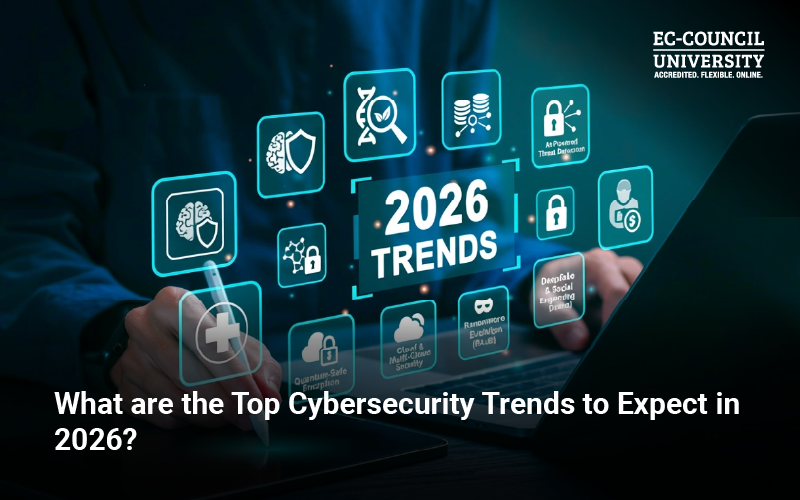With cyber attacks constantly rising, the need for an effective cybersecurity plan has never been more crucial for businesses of all sizes. To safeguard their networks, systems, and data from such attacks, organizations must proactively implement robust security measures, including strategies, IT tools, staff education, and more.
This blog delves into some of the common cybersecurity measures and technologies companies employ to detect cyber threats, emphasizing their importance and how they contribute to overall cybersecurity posture.
8 Cybersecurity Measures to Detect Potential Cyber Attacks
The application of a strategic array of cybersecurity measures not only helps fortify defenses but also enables robust responses to emerging threats. Here are some of the tools and advanced techniques that enable you to stay abreast of the cyber threats:
1. Foundational Tools:
It is the cornerstone of any robust cybersecurity infrastructure, providing essential capabilities for detecting, preventing, an mitigating cyber threats.
- Intrusion Detection Systems (IDS): These monitor network traffic or system activities for malicious behavior or policy violations. IDS can be categorized into network-based IDS (NIDS) and host-based IDS (HIDS). NIDS passively monitors network traffic and analyzes packets to identify suspicious patterns or signatures of known attacks. While, HIDS are deployed on individual hosts or endpoints to monitor activities such as file integrity changes, registry modifications, or unauthorized access attempts. IDS can generate alerts or trigger automated responses when dubious activity is detected, allowing organizations to react swiftly to potential cyber attacks.
- Intrusion Prevention Systems (IPS): It builds upon the capabilities of IDS by not only detecting but also actively preventing the latest cyber attacks. IPS sits in line with network traffic and can block or drop malicious packets or connections based on predefined security policies. IPS can proactively defend against various cyber threats by leveraging real-time threat intelligence and attack signatures, including malware, denial-of-service (DoS) attacks, and intrusion attempts. Further, IPS helps organizations mitigate the risk of successful cyber attacks by thwarting malicious activities before reaching their targets.
2. Network Security Mechanisms:
Network Security Mechanisms are essential components of safeguarding digital infrastructures against cyber threats. They encompass diverse tools and protocols to protect network integrity, confidentiality, and availability.
- Firewalls: By scrutinizing and managing incoming and outgoing network traffic based on predetermined security regulations, firewalls act as an essential defense device for network security. They create a barrier between trusted internal networks and untrusted external networks like the Internet. Firewalls can be implemented at various network architecture levels. This includes perimeter firewalls, which protect the boundary between internal and external networks, and internal firewalls, which segment internal networks to limit lateral movement by attackers. By inspecting packets and applying access control policies, firewalls detect and prevent all types of cyber attacks, filtering malicious traffic and unauthorized access attempts.
- Security Information and Event Management (SIEM): It accumulates, analyzes, and correlates log data from diverse sources within an organization’s IT infrastructure, including network devices, servers, applications, and endpoints. SIEM enables centralized monitoring and detection of any cyberattack by aggregating and analyzing security events in real-time. By correlating events across multiple sources and applying advanced analytics, SIEM can identify patterns indicative of cyber threats, such as unauthorized access attempts, malware infections, or data exfiltration. SIEM also facilitates incident response by providing comprehensive visibility into security incidents and enabling rapid cyber-attack detection and containment.
3. Endpoint Detection and Response (EDR):
Endpoint Detection and Response (EDR) solutions are designed to protect individual endpoints, such as computers, laptops, and mobile devices, from advanced cyber threats. EDR combines continuous monitoring of endpoint activities with advanced threat detection capabilities to identify and respond to the latest cyber attack examples in real time. It can detect malicious behaviors, file-less attacks, and sophisticated malware that evade traditional security measures by analyzing endpoint telemetry data. EDR also provides threat hunting, investigation, and remediation capabilities, empowering organizations to detect and mitigate potential cyber attacks targeting endpoint devices effectively.
4. Advanced Detection Techniques
These methods are employed to identify and mitigate evolving cyber threats, leveraging innovative technologies and analytical approaches to enhance threat detection and response capabilities.
- Anomaly Detection: Anomaly detection involves monitoring system behavior and user activities to identify deviations from standard patterns that may indicate potential cyber attacks. Anomaly detection systems leverage machine learning algorithms and statistical analysis to establish baseline behavior profiles for systems, networks, and users. Any deviations or anomalies from these baselines, such as unusual network traffic patterns, unexpected system resource utilization, or abnormal user access patterns, can trigger alerts for further investigation. It also enhances organizations’ ability to detect cyber threats and insider attacks by identifying anomalous activities that evade traditional signature-based detection mechanisms.
- Honeypots: Honeypots are decoy systems or services strategically deployed within organizations’ networks to attract and divert attackers. They simulate vulnerable or valuable assets that attackers will likely target, such as web servers, databases, or network services. Any interactions with honeypots, including port scans, malware downloads, or unauthorized access attempts, are considered suspicious and trigger alerts. Serving as early warning systems, honeypots capture crucial threat intelligence, including attacker tactics, techniques, and tools. They also help organizations study attacker behavior and develop effective countermeasures to protect their actual assets.
5. Threat Intelligence:
One of the key elements to detecting any cyber attack is threat intelligence. From attack techniques to indicators of compromise (IOCs), it provides organizations with actionable insights into emerging threats. Threat intelligence encompasses various information sources, including open-source intelligence (OSINT), commercial threat feeds, and information-sharing partnerships with industry peers and government agencies. By leveraging threat intelligence feeds, organizations can proactively identify and respond to potential cyber attacks based on known indicators and behavioral patterns associated with threat actors. Integrating threat intelligence into security controls and monitoring processes enhances organizations’ ability to effectively detect and mitigate cyber threats.
6. Security Assessment:
These assessments evaluate and address security risks to fortify organizational defenses against cyber threats.
- Penetration Testing simulates real-world cyber attacks to identify and exploit security vulnerabilities in an organization’s systems, networks, and applications. It helps organizations detect potential cyber attacks by uncovering weaknesses that malicious actors could exploit. By conducting regular penetration tests internally or by engaging security experts, organizations can assess their security posture, validate the effectiveness of defensive measures, and prioritize remediation efforts. Penetration testing provides valuable insights into potential attack vectors and helps organizations strengthen their defenses against cyber threats.
7. User Training and Awareness:
User training and awareness are essential for an effective cybersecurity strategy to detect potential cyber attacks. Familiarizing employees with the best cybersecurity techniques, such as recognizing phishing emails, avoiding suspicious links, and practicing good password hygiene, can help prevent successful cyber attacks. By raising awareness about common cyber threats and social engineering techniques, organizations empower employees to promptly identify and report suspicious activities. User training and awareness programs also foster a cybersecurity culture within the community, where workers actively defend against potential cyber attacks by remaining vigilant and proactive.
8. Behavioral Analysis:
Behavioral analysis involves monitoring user behaviors and system activities to detect potential cyber-attacks based on deviations from standard patterns. Behavioral analysis solutions use machine learning algorithms and behavioral modeling techniques to establish baseline behavior profiles for users, systems, and applications. Any deviations or anomalies from these baselines, such as unusual login times, unauthorized access attempts, or abnormal data transfer activities, can trigger alerts for further investigation. It also enhances organizations’ ability to detect insider threats, advanced persistent threats (APTs), and other sophisticated cyber attacks that evade traditional security measures.
Conclusion
Detecting the latest cyber attacks requires a comprehensive approach encompassing a combination of methods and technologies tailored to the organization’s specific security needs and risk profile. From implementing intrusion detection systems and firewalls to leveraging advanced detection techniques like threat intelligence and behavioral analysis, each security measure is crucial to combat cyber threats. By embracing a farsighted and multi-layered technique for cybersecurity, organizations can strengthen their defenses and mitigate the threat of security breaches and data breaches caused by cyber attacks.







